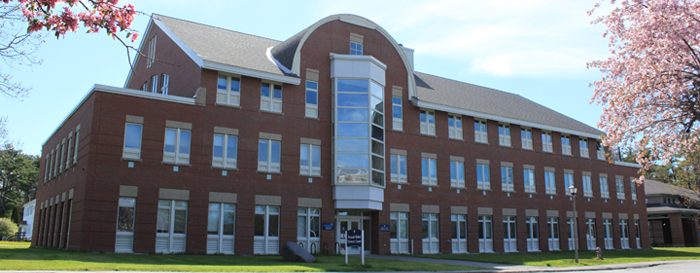History

The University of Maine was founded in 1865 for the purpose of training students in Agriculture and Mechanical Arts. It graduated its first class in 1872.
Since this beginning, subjects in Earth Science, for example general geology, soil chemistry and mineralogy, were taught by various professors. In addition, a rock and mineral collection was established in the chemistry laboratory. It was maintained and enlarged over many years.
During World War II, courses in physical and economic geography were added to the modest geology curriculum and taught until the 1960’s. Following World War II, the University changed considerably as the modern American research university model emerged to meet the demands of the post-war world; at that time the underpinnings of the current School of Earth and Climate Sciences were set in place.
A structural geologist, Dr. Joseph M. Trefethen, was hired in 1938 in the Department of Civil and Environmental Engineering within the College of Technology primarily to teach geology for engineers, and subsequently geology for foresters. He also served as State Geologist from 1942 to 1956 and the survey was housed on campus in Boardman Hall. Slowly additional faculty members were added and the geology group expanded to four representing the subfields of structural geology, paleontology, economic geology and glacial geology. Thereafter for many years faculty members came and went, but the subject areas and numbers of faculty remained constant.
This geology group, while within the Department of Civil Engineering developed a geology major for students in the College of Arts and Sciences and graduated many students with a Bachelor of Arts degree in geology and a few with the Master of Science degree.
In 1968, the geology group (Dr. Philip Osberg, petrology, Dr. Frank Howd, economic geology, Dr. Stephen Norton, structural geology but evolving into low-temperature geochemistry, and Dr. Harold Borns, glacial geology) left the Department of Civil and Environmental Engineering to form the Department of Geological Sciences, with a teaching and research mission within the College of Arts and Sciences under the chairmanship of Dr. Osberg. With that change the new department realized that it would, for the near future at least, remain small and therefore decided that it should develop a single research specialization which would be both unique in subject and viable for attracting graduate students at the M.S. level and external research funds. The staff chose to specialize in glacial and Quaternary geology. This led to a multi-disciplinary focus on the broad areas of paleo-climatology, paleo-ecology and prehistoric archaeology and the hiring of Dr. George Denton, an Antarctic field-oriented glacial geologist and Dr. Thomas Kellogg, a micropaleontologist with interest in the Ice Age. From this beginning came the Climate Change Institute (formerly, The Institute for Quaternary Studies), which was formed by members of the Department of Geology in 1972 as a separate administrative research/teaching unit with joint appointments initially with faculty in Geology, Anthropology, History, and Botany. The School and the Institute have a long track record of close cooperation that has strengthened both units and led to high quality research and teaching programs at the University of Maine. and beyond. Currently, half of the School’s current faculty have joint appointments in the Institute, with several others holding cooperating appointments
